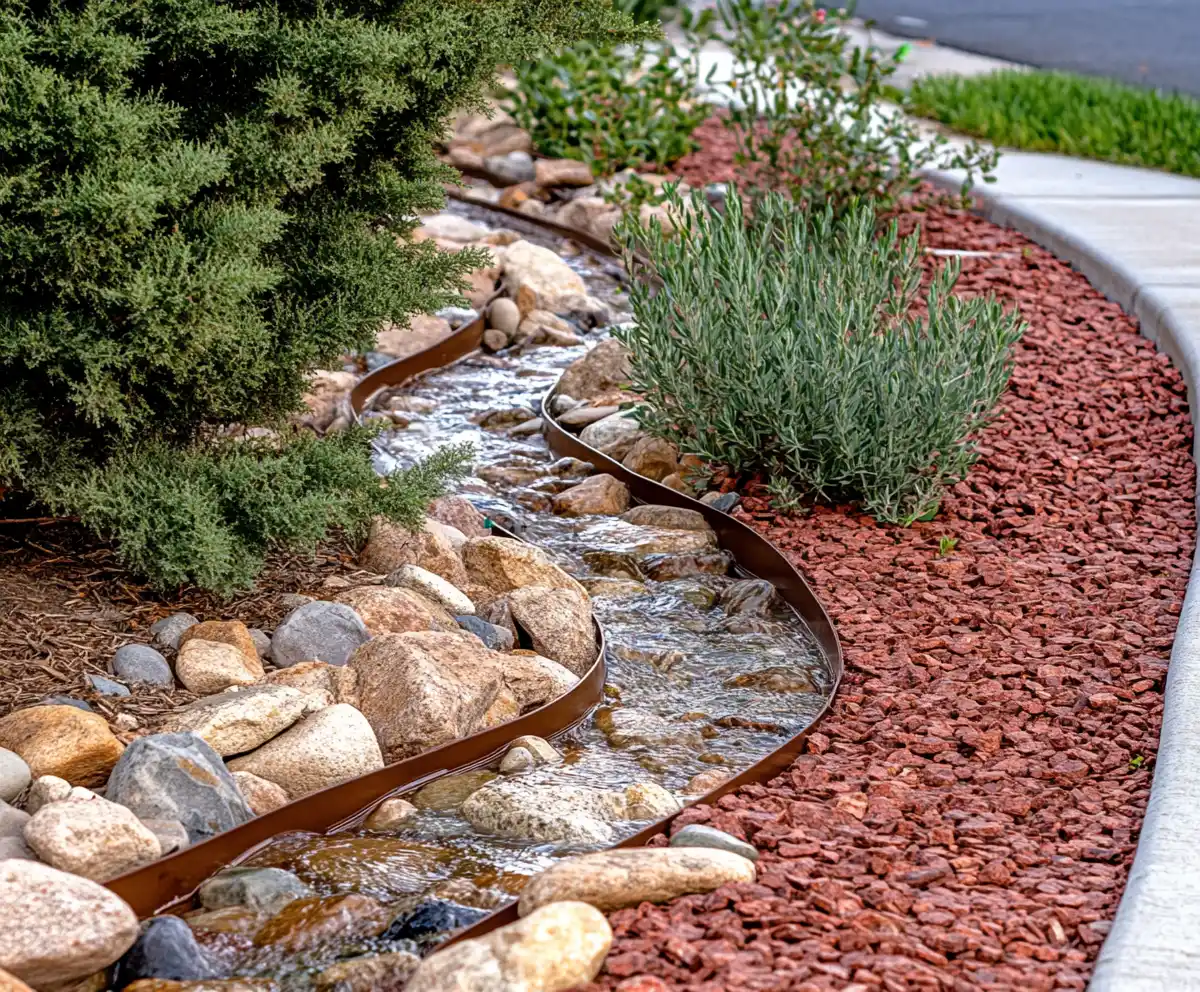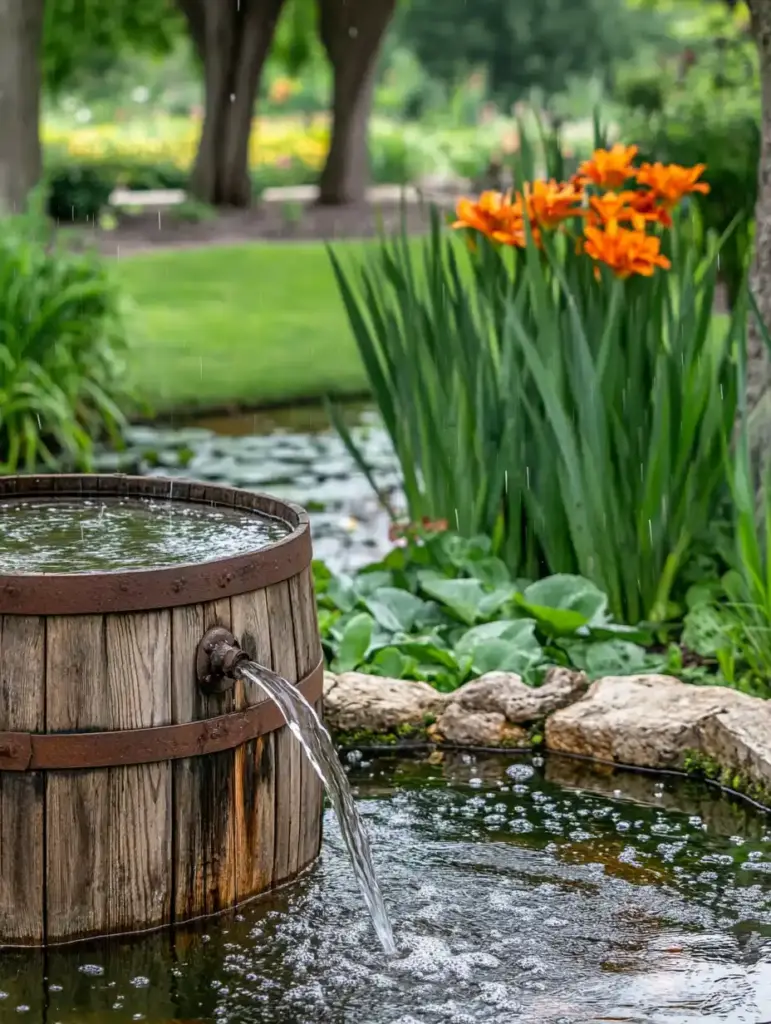Looking for practical, eco-friendly rainscaping ideas that actually work? Today’s homeowners are rethinking how they manage stormwater—transforming runoff from a problem into a valuable resource. Instead of letting rainwater rush into storm drains, where it can carry pollutants into streams and rivers, smart rainscaping ideas help manage water right where it falls. This approach leads to healthier soil, reduced erosion, lower water bills, and a more sustainable landscape overall.
Whether you’re starting with a DIY rainwater collection system or planting native flower beds, there are countless rainscaping ideas to fit every garden style. Below, you’ll find three effective rainscaping ideas that are as beautiful as they are beneficial to your yard—and the environment.
Table of Contents
1. Use a Rain Barrel to Harvest Rainwater Naturally
One of the simplest and most effective rainscaping ideas is installing a rain barrel. These systems connect to your downspouts and collect rainwater from your roof—typically storing 50 to 100 gallons at a time. Not only does this reduce demand on municipal water supplies, but it also gives your garden a free, plant-friendly source of hydration.
Why Rain Barrels Work:
- Rainwater is soft and chemical-free – unlike treated tap water, it’s free of chlorine, lime, and other additives, making it gentler on delicate plants.
- Saves money – using collected rainwater can lower your water bills, especially during dry months.
- Reduces runoff – capturing water before it hits the ground helps prevent erosion and water pooling near your foundation.
Smart Tips for Success:
- Install a diverter to prevent overflow from pooling near your home.
- Connect multiple barrels if you want to expand your capacity.
- For added safety, you may add 1 ounce of chlorine bleach per 55 gallons, then wait 24 hours for chlorine to evaporate before using.
- Never use rain barrel water for drinking, cooking, or pets. It’s only safe for irrigation.
💡 Pro Tip: Position the barrel on a raised stand for better water pressure when using a hose or spigot.
2. Make Landscaping Changes That Work with Water, Not Against It
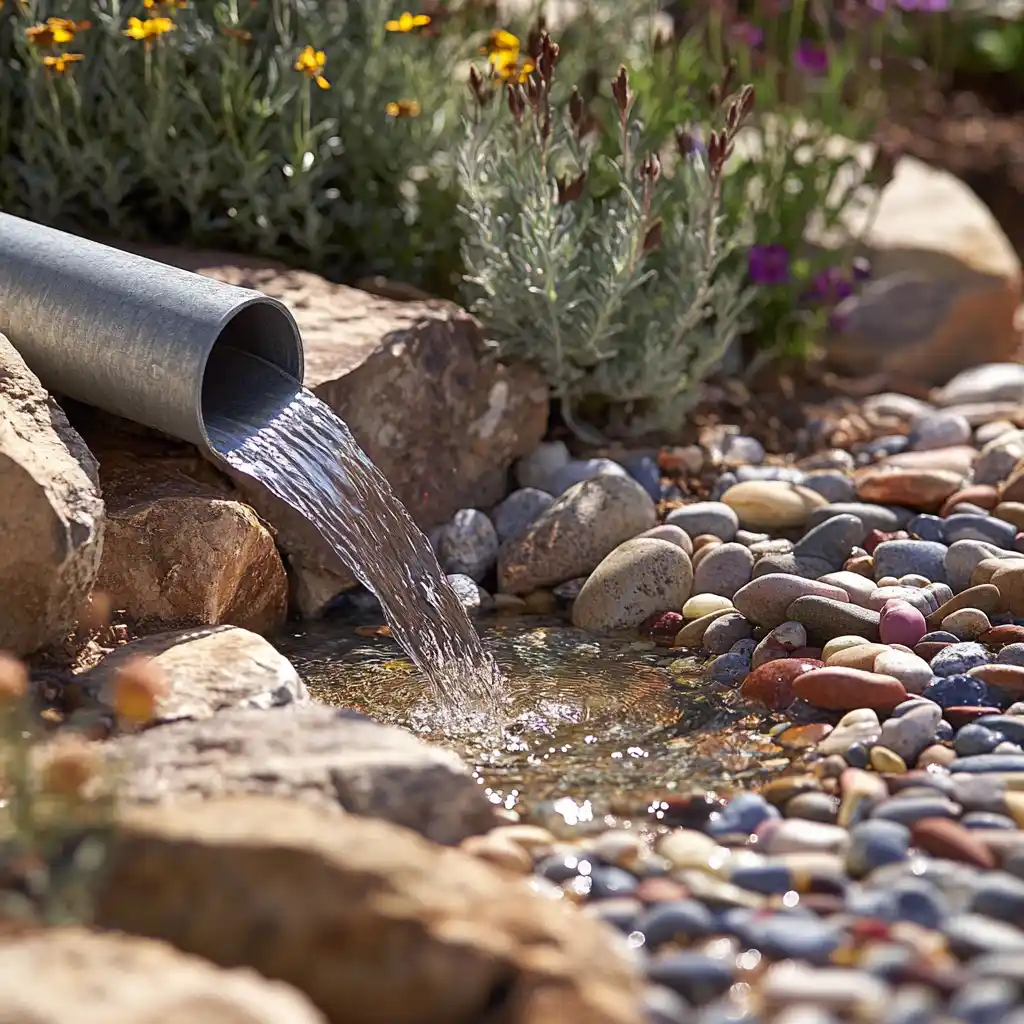
Strategic landscaping is one of the most effective rainscaping ideas because it allows your yard to absorb, filter, and manage water naturally. With a few thoughtful updates, you can reduce runoff, prevent erosion, and improve your yard’s resilience to heavy rain.
Control Erosion with Deep-Rooted Plants
Sloped or uneven terrain can lead to rainwater rushing downhill, stripping away topsoil. Combat this by:
- Planting native trees and shrubs with deep root systems to anchor the soil
- Terracing steep areas to slow water flow and improve absorption
These techniques not only stabilize your soil but also attract birds, butterflies, and beneficial pollinators.
Swap Impermeable for Permeable Surfaces
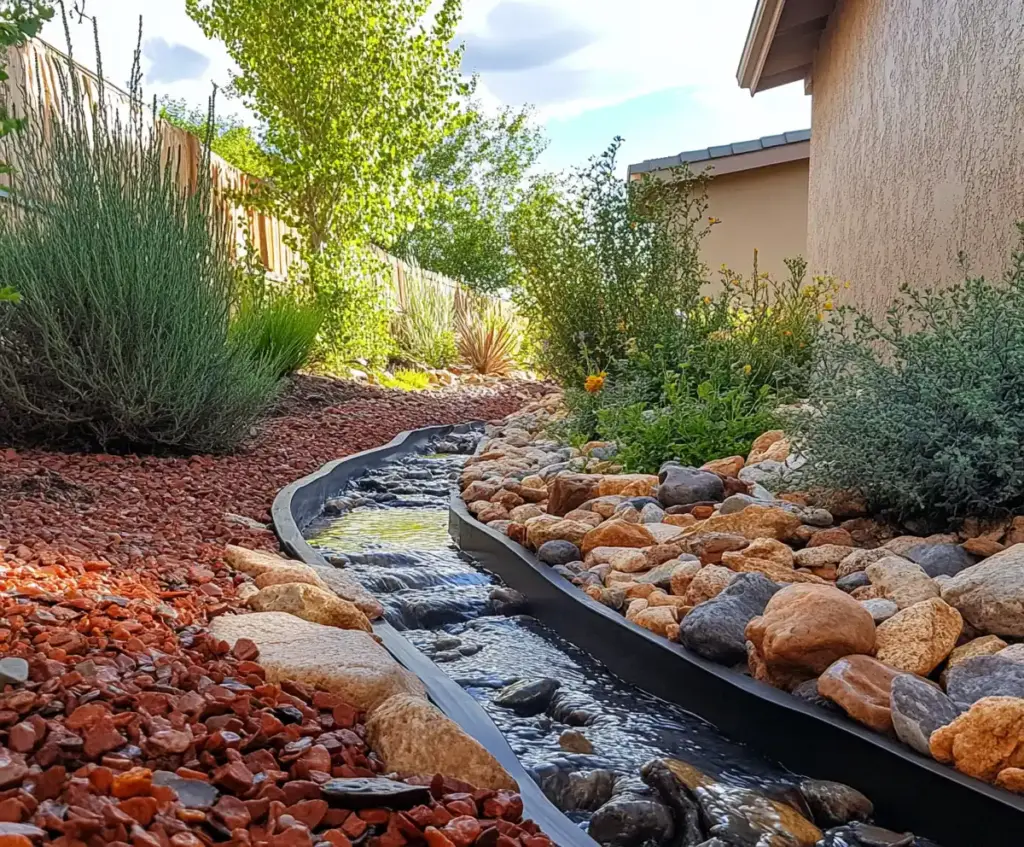
Hard surfaces like concrete and asphalt prevent water from soaking into the ground. Instead, consider:
- Replacing walkways or patios with mulch, pea gravel, or permeable pavers
- Using natural ground covers to filter and slow rainwater
These materials help rain infiltrate the soil, reducing the load on storm drains and lowering flood risk.
Choose Native Grasses and Plants
Native grasses are more drought-tolerant and require less fertilizer, meaning:
- Healthier lawns
- Fewer pollutants carried away by runoff
- Improved soil structure and water retention
🌱 Native plantings are the cornerstone of sustainable rainscaping ideas—they’re low-maintenance and naturally suited to local rainfall patterns.
3. Create a Rain Garden That’s Beautiful and Functional
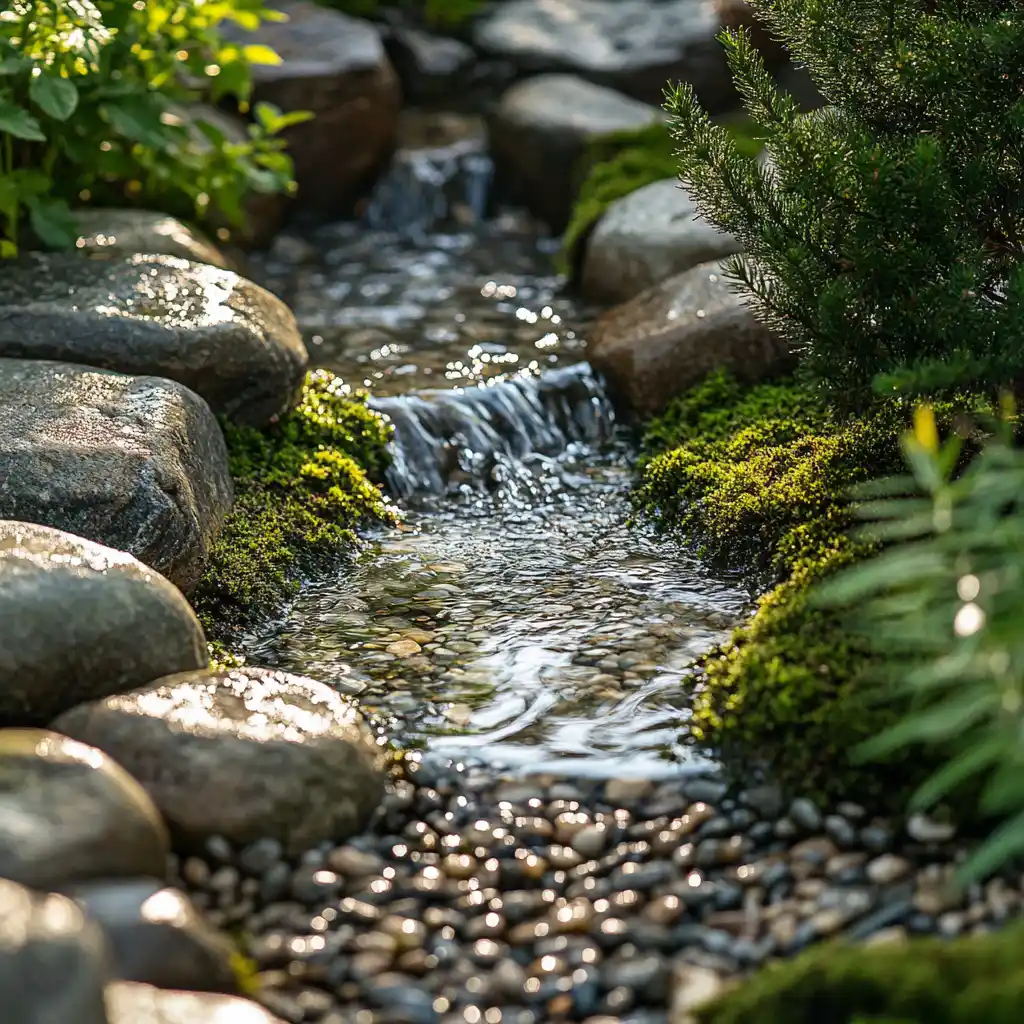
Among the most visually appealing rainscaping ideas, a rain garden offers a natural way to collect and filter stormwater right in your yard. These shallow, planted depressions capture runoff from roofs, driveways, and lawns—allowing it to slowly soak into the ground instead of rushing into sewers.
Why Build a Rain Garden?
- Prevents flooding by diverting water from your home’s foundation
- Filters pollutants before they reach local waterways
- Creates a habitat for butterflies, bees, and birds with native blooms
Design Tips for a Successful Rain Garden:
- Location matters: Choose a spot at least 15 feet from your home and 100 feet from septic systems.
- Drainage test: Dig a 12–18″ deep hole and fill it with water. If it drains an inch per hour or more, the site is suitable.
- Depth and size: Make the garden 3–10 inches deep. Wider gardens can be shallower; smaller ones may need more depth.
- Plant selection: Use native species that can tolerate both wet and dry conditions. Mix deep-rooted perennials, ornamental grasses, and flowering plants.
💧 Need help? Consider working with a professional landscaper to design a rain garden tailored to your yard’s slope, soil, and climate.
💸 Bonus Tip: Look Into Rebates and Incentives
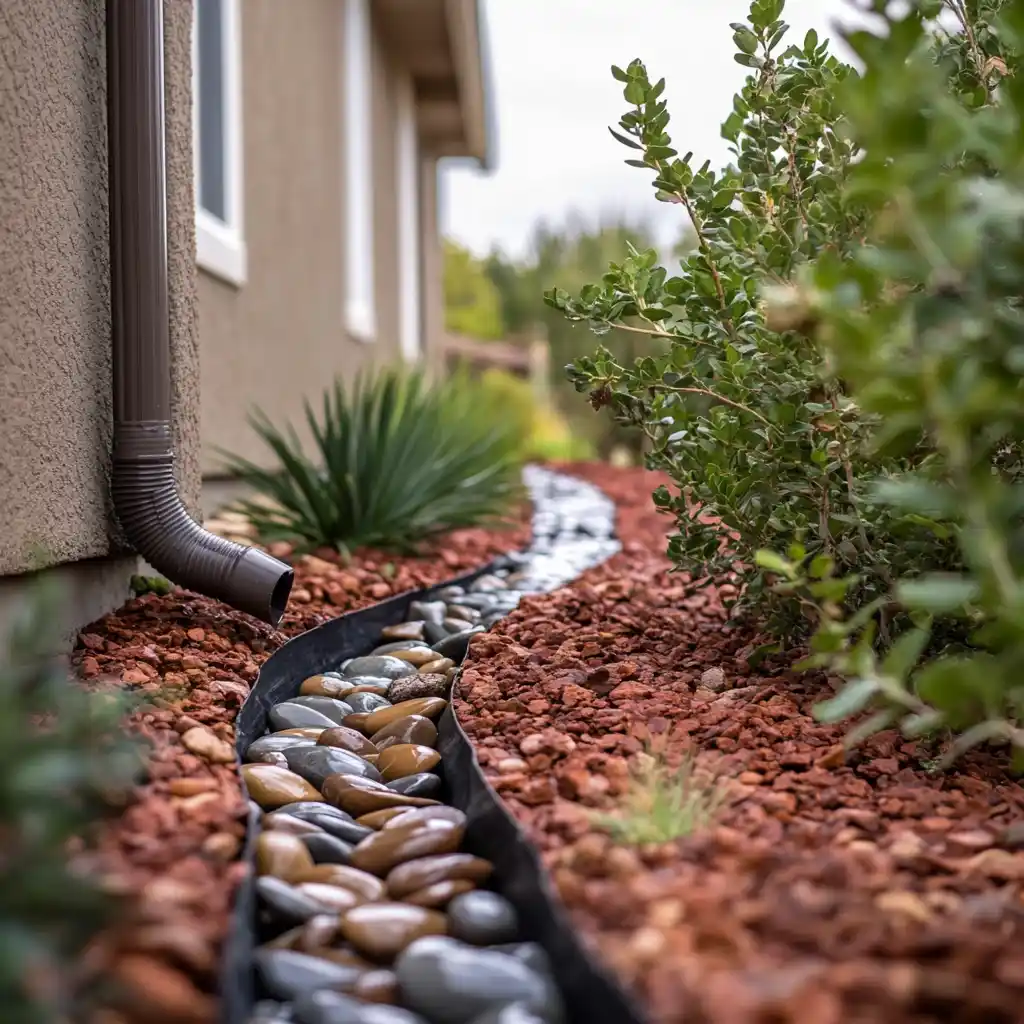
Before diving into these rainscaping ideas, it’s worth checking whether your local or state government offers financial incentives. In many regions, eco-friendly landscaping practices are encouraged through:
- Rain barrel rebates
- Tax credits for rain garden installation
- Stormwater fee reductions
- Free or discounted native plants
Not all areas permit rainwater harvesting, so be sure to check with your local municipality or environmental agency about regulations and programs available in your location.
🌎 Rainscaping isn’t just good for your garden—it contributes to community-wide stormwater management and healthier ecosystems.
❓ Frequently Asked Questions About Rainscaping Ideas
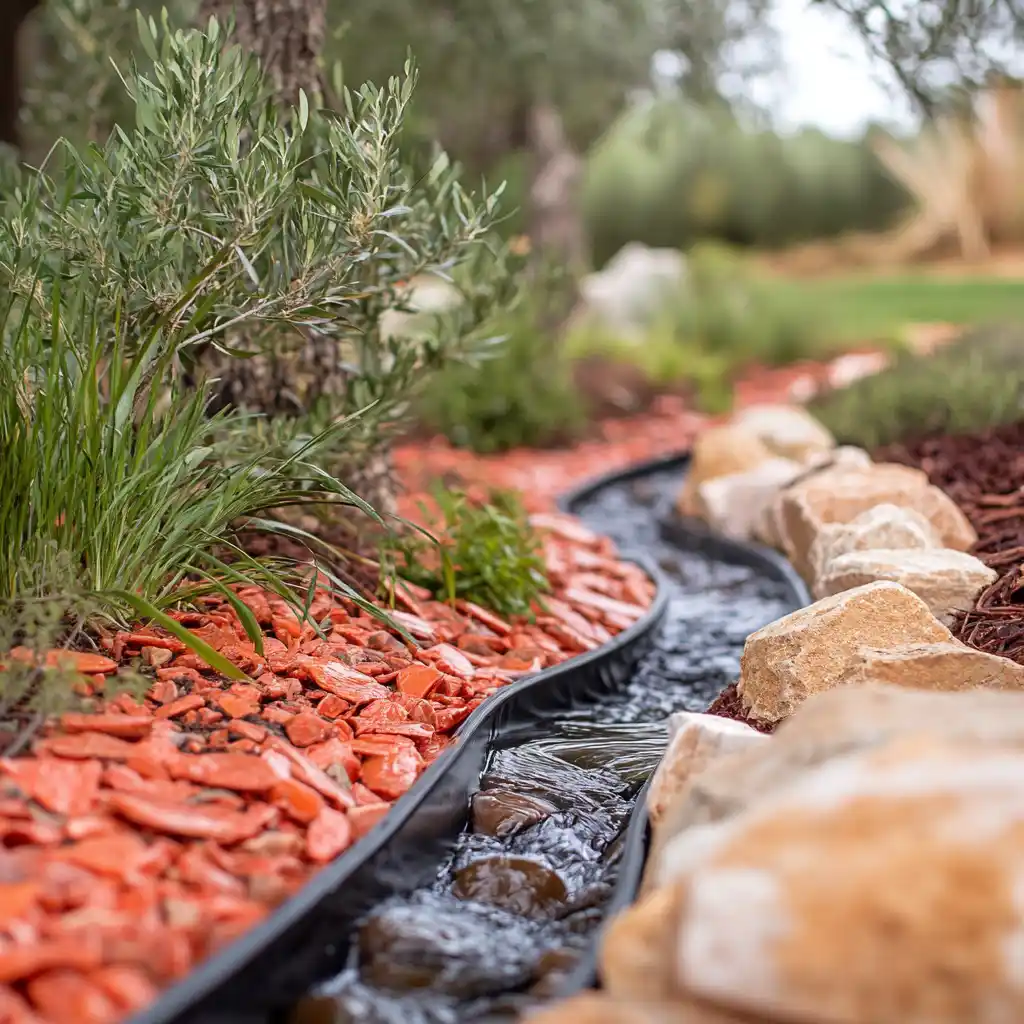
1. What is the purpose of rainscaping?
Rainscaping helps manage rainwater where it falls. Instead of letting runoff carry pollutants into storm drains, rainscaping techniques like rain gardens and barrels slow down, filter, and absorb water naturally.
2. Is rainscaping expensive to start?
It doesn’t have to be. Simple rainscaping ideas like installing a rain barrel or planting native grasses can be budget-friendly. Larger projects like terracing or building a rain garden may require more investment but often qualify for rebates or incentives.
3. Can I use rain barrel water for vegetables?
Yes, but only to water the soil—not the edible parts of the plant. Always wash your produce before eating, and never use rain barrel water for drinking, pets, or cooking.
4. How do I know if my yard is suitable for a rain garden?
Conduct a drainage test: dig a 12–18″ deep hole, fill it with water, and measure how long it takes to drain. If the water drains at least 1 inch per hour, your yard is likely a good candidate.
5. What plants are best for a rain garden?
Native plants that tolerate both wet and dry conditions are ideal. Examples include black-eyed Susan, Joe-Pye weed, switchgrass, and blue flag iris—depending on your local climate zone.
6. Are there legal restrictions on collecting rainwater?
Some states regulate or restrict rainwater harvesting. Check your local laws before installing a rain barrel or starting large-scale rainscaping projects.
🌟 Conclusion: Make Rainscaping Part of Your Green Garden Plan
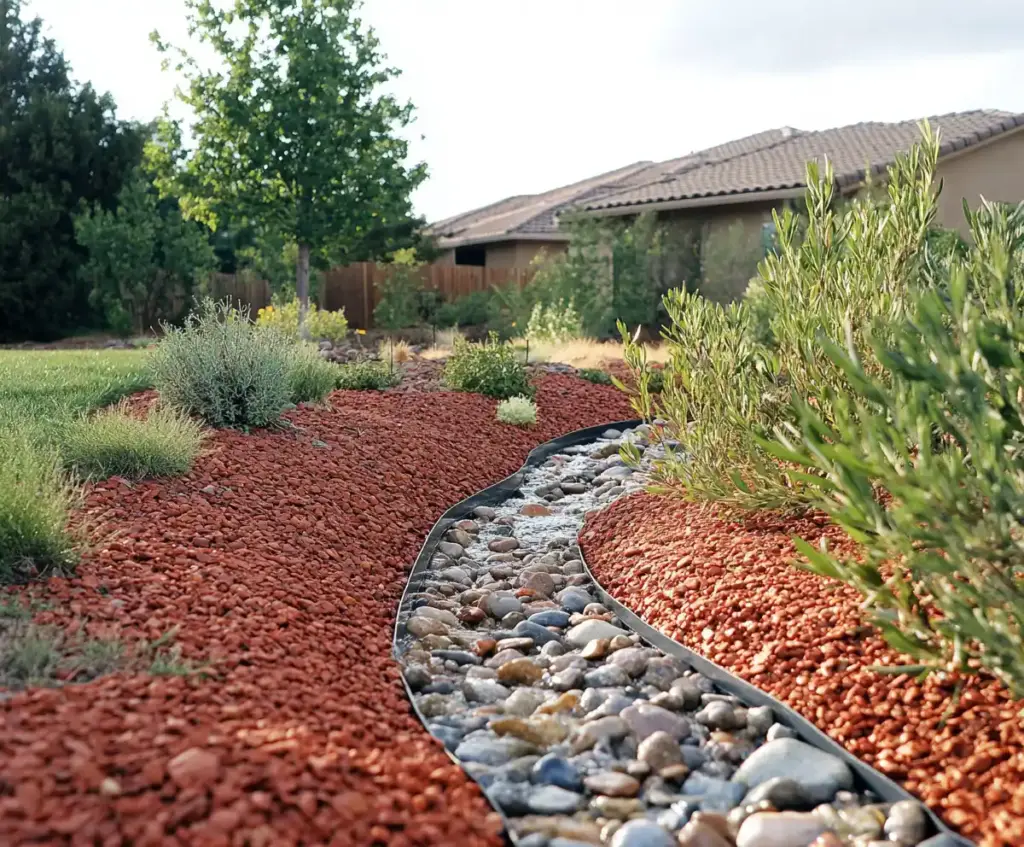
Whether you’re harvesting rainwater with a barrel, reshaping your yard’s slope, or installing a vibrant rain garden, implementing thoughtful rainscaping ideas empowers you to work with nature—not against it. These practical, sustainable solutions not only enhance your garden’s beauty but also support cleaner water, reduce runoff, and create a more resilient ecosystem.
Even simple rainscaping ideas, like using walkable ground covers or adding low-maintenance native plants, can make a measurable impact. Start small or go big—every drop you manage with purpose helps create a greener future.

